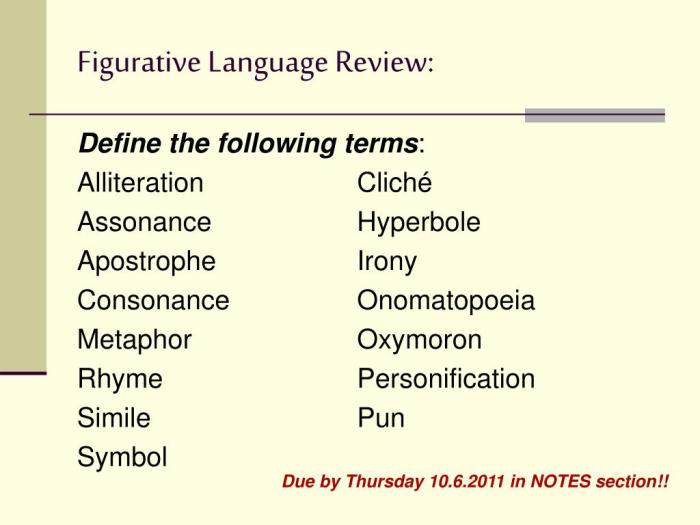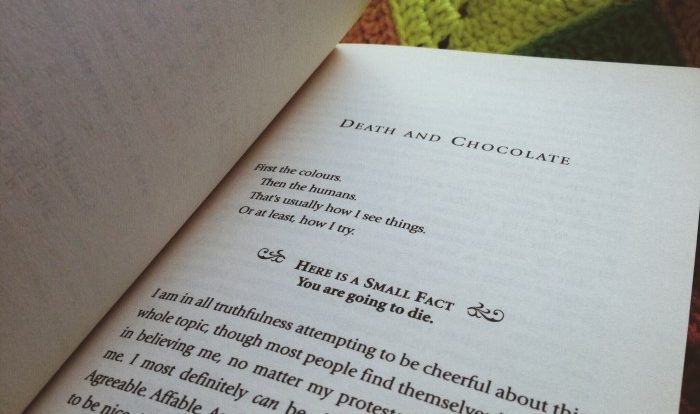Figurative language in Tuesdays with Morrie captivates readers, inviting them into a profound and evocative world where words dance with deeper meanings. Mitch Albom’s poignant memoir unfolds with a rich tapestry of literary devices that elevate the narrative, enhancing our understanding of characters and themes, and leaving an indelible mark on our hearts.
Through metaphors, similes, personification, and other literary techniques, Albom weaves a narrative that transcends the boundaries of ordinary storytelling, creating an immersive experience that lingers long after the final page is turned.
Figurative Language in “Tuesdays with Morrie”

Mitch Albom’s “Tuesdays with Morrie” is a poignant memoir that explores the themes of life, death, and the meaning of existence through the conversations between the author and his former college professor, Morrie Schwartz. The book is rich in figurative language, which enhances the reader’s understanding of the characters and themes.
Metaphors and Similes
- Metaphor:“Life is a journey.” This metaphor compares life to a journey, suggesting that it is a process of growth, change, and discovery.
- Simile:“Morrie’s body was like a tree that had lost its leaves.” This simile compares Morrie’s aging body to a tree that has lost its leaves, highlighting his physical decline.
Personification and Symbolism
- Personification:“The disease had taken hold of Morrie.” This personification gives the disease human qualities, suggesting that it is an active force that has control over Morrie.
- Symbolism:“The oak tree in Morrie’s backyard symbolizes his strength and resilience.” This symbolism connects the tree to Morrie’s character, suggesting that he is strong and determined despite his illness.
Irony and Sarcasm, Figurative language in tuesdays with morrie
- Irony:“Morrie, the man who had taught me about the meaning of life, was now dying.” This irony highlights the bittersweet nature of Morrie’s situation.
- Sarcasm:“I’m sure you’re all very concerned about my health.” This sarcasm reflects Morrie’s dry sense of humor and his ability to face his own mortality with courage.
Hyperbole and Understatement
- Hyperbole:“I was so scared that my heart felt like it was going to explode.” This hyperbole emphasizes the narrator’s intense fear.
- Understatement:“Morrie’s death was a difficult time for me.” This understatement downplays the narrator’s grief, suggesting that it was even more profound than words can express.
Imagery and Sensory Details
- Imagery:“The room was filled with the smell of coffee and the sound of birds singing.” This imagery creates a vivid and immersive reading experience.
- Sensory Details:“I could feel the warmth of Morrie’s hand in mine.” These sensory details enhance the reader’s emotional connection to the characters.
Query Resolution: Figurative Language In Tuesdays With Morrie
What is the significance of metaphors in Tuesdays with Morrie?
Metaphors in Tuesdays with Morrie provide vivid comparisons that deepen our understanding of characters and themes. For instance, Morrie’s description of life as a “terminal disease” poignantly captures the inevitability of death and the preciousness of time.
How does personification contribute to the emotional impact of the story?
Personification in Tuesdays with Morrie breathes life into abstract concepts, intensifying the emotional resonance of the narrative. For example, Albom’s portrayal of death as a “shadow” conveys its haunting and inescapable presence.



